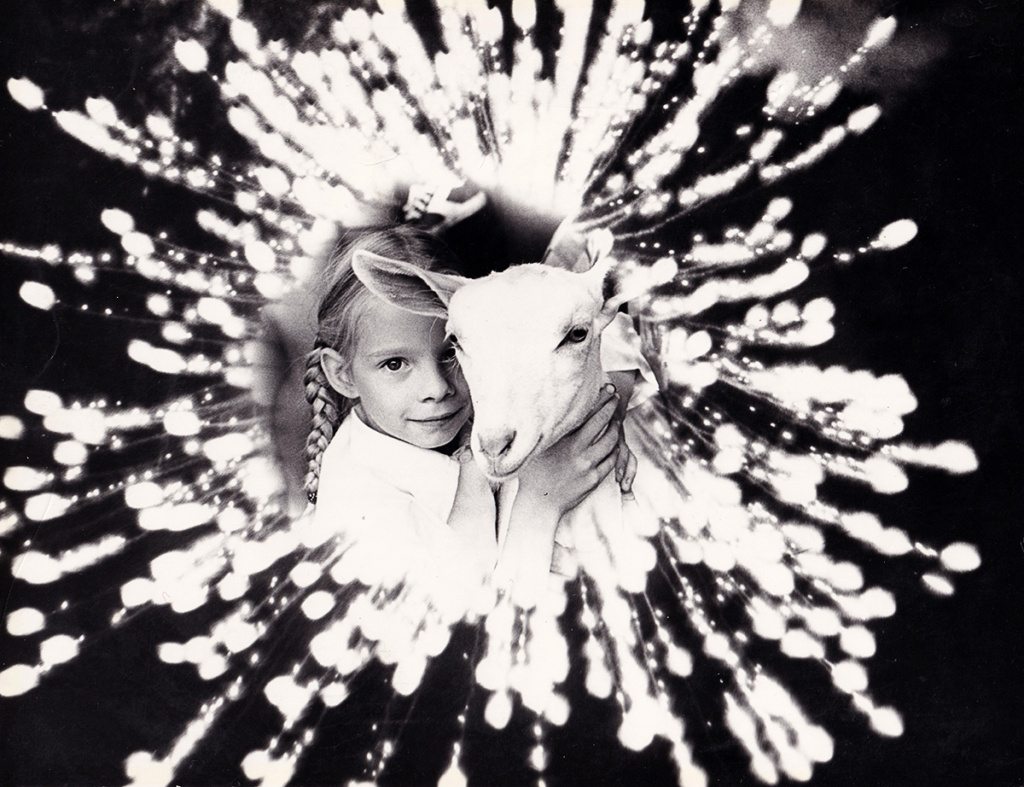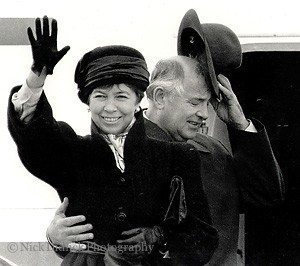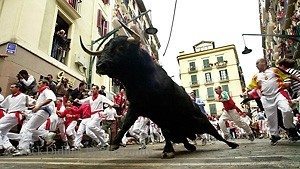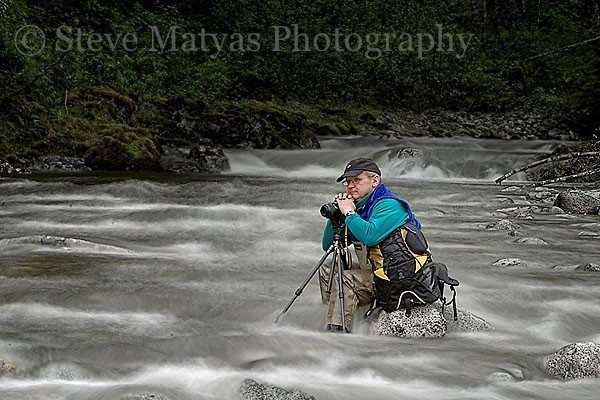AboutMe
Nick Didlick is a Vancouver, Canada-based commercial/editorial photographer and digital imaging consultant.
His extensive career in photojournalism and photography has spanned over four decades, two continents, and over 60 countries, holding staff photographer positions at United Press Canada (UPI), Reuters, the Vancouver Sun, and the National Post. He has twice been nominated for a Pulitzer Prize and is a National Newspaper Award-winning photographer.
While at the Vancouver Sun, he served as both photographer and Director of Photography and led the photo department’s successful switch from film to all-digital photography.
He is a widely sought-after speaker on digital imaging workflow, works for several editorial/commercial photography clients, and is a Digital Imaging Consultant. On the consulting side, he works for the International Olympics Committee on their Young Reporters Program and Sony USA on future applications, cameras, and networking.
Want to know more? Read on.

The 1970s: He began his career in photojournalism by working for a small weekly newspaper, The Progress, in Maple Ridge, B.C., in 1975. From 1976 until 1979, he worked at The Progress, The Coquitlam Herald, and then the Edmonton Sun, a daily tabloid newspaper in Edmonton, Alberta.
Nick wasted no time learning and perfecting his chosen profession during these early years. “I love making pictures, and the camera chose me. I just hung onto my camera straps tightly and went along for the ride!”. When pushed to elaborate, he said, “I am a curious person by nature, and I love to meet people from all cultures and walks of life and learn a little bit about them. What better way is there to do that than as a photojournalist”.

The 1980s: In December 1979, at 22, Nick joined United Press Canada (the UPI affiliate in Canada) and traveled widely for the next five years on assignment in North and South America and Europe. In April 1985, he moved to the newly formed Reuters News Pictures Service in Brussels, Belgium. He later transferred to London, England, as Deputy Chief Photographer for the United Kingdom and Ireland.
Nick was the Reuters Journalist of the Year in 1988 (the first time awarded to a photojournalist) and twice nominated for a Pulitzer award by Reuters; for a picture from the 1985 Heysel Stadium Soccer Riot and a picture of Mikhail and Raisa Gorbachev after the Reagan/Gorbachev Summit in Reykjavik, Iceland in 1986.
The 1990s: Didlick returned to Vancouver and the Vancouver Sun in 1990 (after living out of a suitcase for nearly ten years) to enjoy the outdoor lifestyle the Canadian west coast offers. He covered many National and International assignments for the Vancouver Sun.

Nick had been working with digital photography since 1986 when Reuters took delivery of their first electronic picture desk.
In August 1994, the Vancouver Sun published its first all-digital photograph using the Associated Press’s NC 2000 (News Camera, 2000). The front page picture Nick took (below) showed Queen Elizabeth arriving for the XV Commonwealth Games. That year marked a significant change in photojournalism as newspapers and print news organizations looked at integrating still digital cameras into their workflows to meet deadlines with breaking news. Quipping to competing news photographers during the Commonwealth Games, Nick was often heard to say, “If it ain’t digital, It ain’t News,” referring to the speed his new digital camera could deliver images to the Vancouver Sun.
In 1995, he was one of the lead members of a team responsible for converting the Vancouver Sun and Province newspapers to a completely digital photo operation, the first newspaper in the world to do so. The newspapers and their staff of 18 photographers converted from film-based photography to electronic photography using 20 – NC 2000 (News Camera, 2000) digital cameras. Since then, he has been a digital photography consultant and lecturer to many clients in Canada and the United States while at the same time working on several photographic projects.
Always intrigued by new forms of communication combined with a thirst for knowledge, Nick started in 1994 to experiment with the World Wide Web by teaching himself web design and, more importantly, integrating high-quality images on the web. “The Web is one of the most captivating forms of communication in the world today,” he says. “It is a visual extravaganza, a perfect showcase for still photography.” For Nick, that means blending still photography with sound, making Virtual Reality scenes and other mixed media content delivered via the web for readers, Internet surfers, and viewers. “The print media has a limited reach, and it is costly to produce a printed product. What could be more exciting than placing work on the web, which is relatively inexpensive and has an almost limitless audience?”. In 1996 he launched PixelZone, his personal photo website, which has always been a work in progress and a place for him to display and experiment with web content delivery.
In 1996 he became the Photo Editor of the Vancouver Sun, overseeing the day-to-day operations of the 17-member photo staff and a pool of freelance photographers. He also lectured and consulted widely on digital imaging and started his own consulting business.

Thinking back to the 1990s, it’s hard for Nick to pinpoint one highlight. He recalls 1999 as one of his most productive years, and he set up Canada’s newest daily newspaper’s photographic department at the National Post based in Toronto. He won a National Newspaper Award and a British Columbia Newspaper Foundation Award for his photography on the Vancouver Sun’s Fate of the Strait series and a Feature Photography Award from the BC Newspaper Foundation. And fondly remembers photo assignments in Russia, Korea, England, and Switzerland.
The New Millennium 2000: In the fall of 1999, he joined the photographic staff of the National Post after ten years at the Vancouver Sun. Didlick moved on to the National Post to look for new challenges entering the millennium. He also started an online Fly Fishing magazine, “A River Never Sleeps,” in March of 2000 with writer and colleague Mark Hume.
In September of 2001, after two years with the National Post, Nick moved on to pursue other career challenges making his private consulting and photography business his primary concern. Working alone or with other companies, he began teaching and consulting on digital cameras, photo applications, and photo workflow.
During this time, he worked with many companies to assist them in staying at the forefront of the ever-growing and changing world of digital photography in its still and motion forms. Most notably, he has been a key member of Blue Pixel Inc, became a faculty member of the Nikon School, and developed a worldwide training program for the 600 photo staff of the Associated Press.

He was also busy shooting both Editorial and Commercial photo assignments requiring the production of still and video imaging. Looking for new challenges outside Digital Imaging and Photography, Nick became a licensed Fly-Fishing Guide running a white-water raft on rivers near Vancouver. When asked why he started this new venture, he said, “I wanted to do something as far away from computers, cellphones, and web servers as possible. Besides, I love learning new things; it keeps my mind sharp, and it isn’t everyone’s dream to make a hobby into a lifestyle.” His Fly-Fishing Guiding service website is Fly Fishing Vancouver.
In August 2007, he became the Photo Chief of the Vancouver 2010 Olympics, responsible for every aspect of still photography at the games and the 700 press photographers attending the event. It was the perfect job for Didlick as it required a mix of photo managerial skills with expertise in press photography and technology.
As 2009 ended, and the 2010 Olympics loomed, Nick was in charge of 38 staff and 250 volunteers, and he had created and managed a few Olympic firsts. Nick had planned and implemented a modern Photo Services Centre which hosted Nikon, Canon, Apple, Microsoft, Lexar, and SanDisk and had engineered an Olympic Wide Private WiFi network to allow the reliable direct filing of wireless still cameras to the internet. He also helped develop a “high-tech sled” to enable photographers to file from the side of the Olympic Downhill to the world before the skier had crossed the finish line.

2011 – Present
While shooting still, video projects, and 360 panoramas for clients, Nick taught the Nikon School of Photography and the Nikon School of Videography. He also was the Venue Photo Manager for Gymnastics at the London 2012 Olympics and, in 2014, was the Photo Manager for the Track and Field at the Rio Olympics.
In 2017 while consulting for Sony, he saw the future of digital imaging with the groundbreaking Mirrorless a9 camera. He began consulting with Sony on the future of digital imaging hardware and software.
While shooting still, video projects, and 360 panoramas for clients, Nick taught the Nikon School of Photography and the Nikon School of Videography. He also was the Venue Photo Manager for Gymnastics at the London 2012 Olympics and, in 2014, was the Photo Manager for the Track and Field at the Rio Olympics.
After the Vancouver Winter Olympics, Nick became an IOC Photo Expert and Photography Instructor for the IOC’s Young Reporters program. “I love teaching and giving back to the career that has given me so much.” “It’s gratifying to see Young Reporters from all over the world covering Summer and Winter Youth Olympics getting great images, using their new skills on their social media feeds, and enhancing their reporting back home.”
Looking Back:
He has covered Royal Tours, Olympics, Super Bowls, Superpower Summits, man-made and natural disasters, riots, and other conflicts. When asked which is his favorite picture, he says, “I don’t have one favorite picture, but I do have a collection of favorite memories.”
These favorite memories come from the many photographs he has taken while hanging onto his camera straps. “Like walking through the snow-covered forest in Akademgorodok, Siberia, in 1992 with a grade five student on her way to school, or standing alone amongst the 25 mortuary totem poles of the Haida’s Ninstints Village in the Queen Charlotte Islands on Canada’s remote and rugged west coast”.
Nick has a deep respect for those he photographs and a fiery sense of adventure when telling these stories, whether it’s riding a “tourist camel” in front of the Giza Pyramids near Cairo or photographing rock star David Lee Roth in a seedy dark Vancouver hotel with whipped cream and ladies of the night.
Didlick’s photos have appeared in many of the world’s major newspapers and magazines, including the International Herald Tribune, The New York Times, The Times of London, The Sydney Morning Herald and Stern, Time, Newsweek, Vanity Fair, and Rolling Stone Magazines.
Into 2024 and beyond, ” I am never one to look back,” Didlick says, “I relish the prospect of new challenges that might come my way.”

When asked to look into the future, Nick laughs and says, “The future, I don’t want to know what’s coming. That takes all the fun out of life! Life is a curve ball; how you handle it is important”.
If he is not on a river or lake with a fly rod, he will probably be shooting photo assignments or consulting from his home base in Vancouver, Canada.
A member of the following Industry Organizations.





-30-
